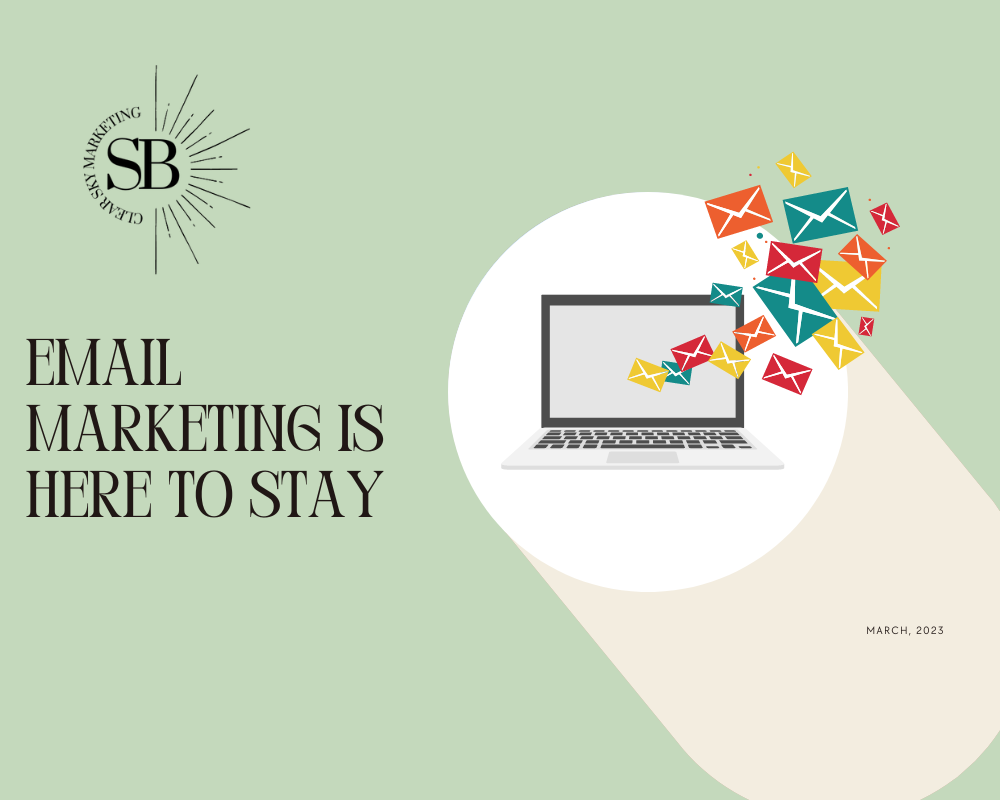Who said email marketing was dead?
Let’s not get it twisted, email marketing isn’t going anywhere, and why would it? Despite the rise of various social media platforms spiking in popularity, email is still seen as the best channel to reach consumers. To put into perspective, 96% of consumers check their email daily, so it wouldn’t make sense for a marketer to look past a communication channel with so much reach. While most consumers currently use email daily, this statistic is expected to grow 3 percent annually, so if you aren’t utilizing email marketing now you should be. Email marketing refers to the use of email communications in a marketing strategy to reach specific business goals. When formulating any marketing strategy, one of the most important steps is to know your consumer to effectively give them what they need.

Email marketing provides marketers with a distribution channel to efficiently give consumers what they need at a low cost. Email marketing can also be used to accomplish a plethora of marketing objectives, this includes but is not limited to generating sales, increasing brand awareness, and increasing customer acquisition. Building relationships and enhancing communication between the company and the consumer can also be achieved through the use of email marketing. Utilizing email software is extremely beneficial for marketers using email marketing.
Use email software to manage your email campaigns
Simply put, email software is a program with features and capabilities for sending and receiving electronic emails. Examples of popular email software are Hubspot and MailChimp. Using email software allows marketers to send out multiple emails at once, analyze users to send personalized content, and track marketing objectives like engagement and sales.

Email software also makes composing and sending personalized messages to users much more convenient. For example, through software like MailChimp, the marketer can define keywords for the software to auto-respond to. Personalization is an essential skill for marketers to have as it strengthens customer experiences and makes it more likely for the email to be opened and clicked on because you are giving your customers direct access to what they’re searching for. Effective personalized emails include birthday messages and reminders sent to the consumer of products they have left in their cart.

Marketing Automation
The email software described above is an example of marketing automation, which refers to technologies and software platforms designed to market on multiple channels and complete repetitive tasks. Marketing automation works to assist marketers across multiple channels including email marketing, websites, and various social media channels. Therefore, implementing marketing automation into your marketing strategy can improve efficiency and lead you to effectively meet your business objectives across multiple communication channels, not just email marketing.

You need a good landing page!
Since we have established the importance and benefits of email marketing, an extremely important component of the content of the email campaign is where the link provided in the email takes the consumer. This is called a landing page, which is a standalone web page designed with a single focus or goal, more commonly referred to as a call to action “CTA”. This is not to be confused with a company’s homepage, as a landing page should be created specifically for an advertising campaign and work to achieve the defined marketing objectives. A landing page guides consumers through the marketing funnel and supplies conversions, so to ensure that this happens, here are some guidelines to follow when designing an effective landing page;
- Make it simple and concise: consumers should be able to easily access your CTA button or link and know exactly what is being shown to them by having a clear headline.
- Trust signals: Social proof is an effective message strategy method that can achieve both liking and preference by earning their trust. Trust signals can include reviews and testimonials from previous customers or even displaying the logos of the accepted payment processors.
- Effective CTA: The call to action is arguably the most crucial component of a good landing page. Try to be specific so your consumer knows how and why to take action, this can be done through the use of a CTA button where if pushed the user can easily convert.
- Visuals that support the offer: These can also work as trust signals, and images are known to grab the attention of users rather than the use of excessive text. Why tell consumers what you can do for them when you can show them instead?
- Keep user experience in mind: When designing landing pages make sure that the page loads quickly and can adapt to any device so the landing page is functional on a phone, tablet, computer, etc.

